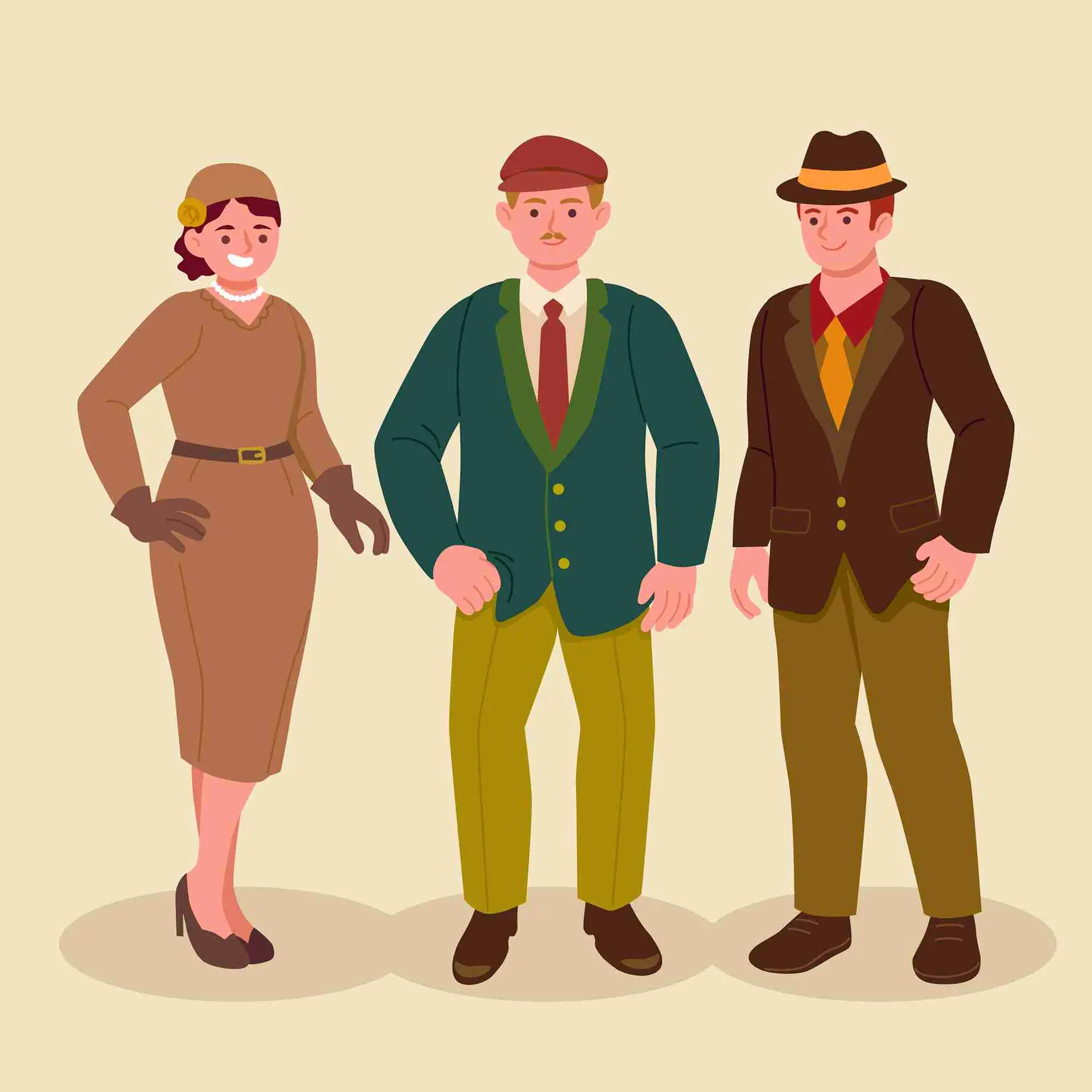The 1930s were a transformative decade in the world of Fashion. It was a time marked by economic hardship due to the Great Depression. Yet, the period also saw incredible innovation in style, creating timeless looks that continue to influence Fashion today. 1930s Fashion is often remembered for its elegant, sophisticated, and feminine silhouettes, contrasting with the previous decade’s loose, carefree styles. This era saw subtle and dramatic shifts in clothing styles, from refined evening gowns to relaxed yet stylish daywear, leaving behind a legacy of grace and glamour.
The Influence of the Great Depression on 1930s Fashion
The Great Depression had a profound effect on 1930s Fashion. The economic downturn led to more straightforward and practical designs, yet Fashion still maintained an air of elegance. People couldn’t afford the extravagant styles of the 1920s, but they still desired clothing that made them feel stylish. As a result, designers adapted by focusing on creating beautiful and wearable clothing, often using more affordable fabrics. Daywear, in particular, became more streamlined, with skirts lengthening and dresses becoming more form-fitting.
Key Elements of 1930s Fashion
One of the defining features of 1930s Fashion was the hourglass silhouette, which became the hallmark of the decade’s style. Designers emphasized a fitted waist, often achieved through corsetry or belt cinching, while skirts and dresses were cut to accentuate natural curves. Fabrics such as satin, silk, and velvet became popular for evening wear, while daytime looks incorporated lightweight wool and cotton. The decade also saw a renewed love for luxurious details, including intricate pleating, embroidery, and lacework, which added to the overall femininity of the look.
The Rise of Hollywood Glamour
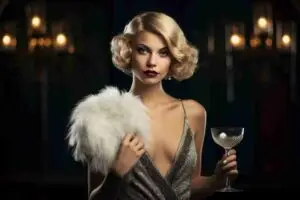
The 1930s were also the golden age of Hollywood, and the fashion industry took notice. Actresses like Greta Garbo, Joan Crawford, and Marlene Dietrich became style icons, influencing women’s Fashion and the burgeoning trend of evening wear. Hollywood glamour was synonymous with dramatic gowns, fur stoles, and dazzling accessories during this time. Films like The Thin Man and Gone with the Wind set the standard for what women aspired to wear, and the influence of movie stars was seen everywhere—from the red carpet to everyday life.
Daywear: Simplicity Meets Style
Daywear in the 1930s was more refined and practical than the previous decade. 1930s fashion for everyday wear often involved tailored dresses with a more modest cut. Dresses were designed to feature clean lines and structured shapes, allowing movement and comfort. Fabrics like linen, cotton, and wool were common choices for these outfits, making them versatile for daily wear. Additionally, jackets and blouses became more fitted, often paired with pencil skirts that highlighted the body’s natural shape, creating a balanced look that was both fashionable and functional.
Evening Wear: Dramatic and Glamorous
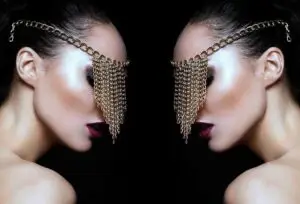
Evening wear during the 1930s reflected the glamour and sophistication of the time. Luxurious fabrics, intricate details, and body-skimming designs characterized women’s evening dresses. Gowns were often made from silk, satin, or velvet and featured deep V-necks, backless designs, and floor-length hemlines. The silhouette was typically slim, with long, flowing skirts allowing dramatic movement. Accessories played a crucial role in 1930s evening fashion, with women wearing long gloves, sparkling jewelry, and wide-brimmed hats to complete their look.
The Role of Accessories in 1930s Fashion
Accessories were crucial in shaping the 1930s fashion look, elevating simple outfits to a more sophisticated level. Hats were a key accessory for daytime and evening wear, with styles ranging from cloche hats to wide-brimmed, dramatic creations. Scarves, often made from silk or chiffon, were worn to add an elegant touch, and long gloves were almost always part of an evening ensemble. Jewelry in the 1930s also leaned toward opulence, with oversized brooches, statement necklaces, and diamond-studded earrings making regular appearances on movie stars and socialites alike.
The Evolution of Menswear in the 1930s
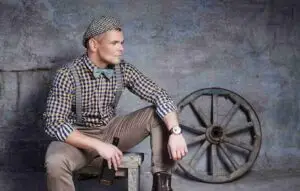
Men’s Fashion in the 1930s reflected both the era’s social changes and its need for practicality. Suits were tailored more closely to the body than the boxier shapes of the 1920s, with a slimmer silhouette becoming the trend. Trousers were high-waisted and had a slight taper at the ankle, while jackets featured broader shoulders and narrow waists. The color palette for menswear during this time was muted, with earthy tones like brown, gray, and navy dominating the look. Accessories such as ties, pocket squares, and hats, including fedoras and bowler hats, were common additions that completed the sophisticated look.
The Influence of 1930s Fashion on Today’s Trends
Though the 1930s fashion era was over 90 years ago, its influence continues to shape modern Fashion. The structured, feminine silhouettes, luxurious fabrics, and Hollywood glamour continue to inspire designers and stylists. Elements of 1930s Fashion can be seen in contemporary evening gowns and the current trend for vintage and retro styles. Designers like Dior and Chanel have drawn inspiration from the elegance of the 1930s, and even in street style today, you can spot elements of this refined, sophisticated aesthetic.
Why 1930s Fashion Still Captures Our Imagination
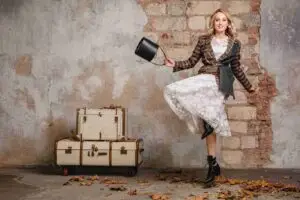
The enduring appeal of 1930s fashion lies in its balance of practicality and elegance. Despite the hardships of the Great Depression, Fashion in the 1930s remained a means of expression and an outlet for creativity. The silhouettes were flattering, the fabrics were luxurious, and the attention to detail made every outfit seem unique. For many, the 1930s represent a time when style was elevated to an art form, blending beauty with craftsmanship. Its impact continues to be felt, not only in vintage fashion circles but also in mainstream collections today.
FAQs About 1930s Fashion
Q: What were the main characteristics of 1930s Fashion?
Ans: The main characteristics of 1930s Fashion were elegant, feminine silhouettes that emphasized the hourglass figure. Dresses often featured cinched waists, soft pleats, and floor-length skirts, while fabrics like silk, velvet, and satin were favored for evening wear. Daytime clothing became more modest and practical, with tailored dresses and skirts. Accessories such as hats, gloves, and scarves were essential in elevating the look. Hollywood glamour also defined the era where movie stars like Greta Garbo influenced trends.
Q: How did the Great Depression influence 1930s fashion?
Ans: The Great Depression significantly impacted 1930s Fashion, as people couldn’t afford the extravagance of previous decades. This led to simpler, more practical designs. While the era maintained a sense of elegance, clothing became more affordable, with less emphasis on ornamentation. Despite the financial strain, the desire for sophistication and beauty persisted, resulting in well-tailored garments that used more economical fabrics like wool and cotton for daywear. Evening gowns, however, continued to reflect luxury and glamour.
Q: How did Hollywood influence 1930s Fashion?
Ans: Hollywood profoundly influenced 1930s Fashion, as movie stars became fashion icons. Actresses like Marlene Dietrich, Greta Garbo, and Joan Crawford set trends for everyday style and glamorous evening wear. The opulent gowns and accessories worn by these stars inspired women worldwide. Hollywood glamour became synonymous with elegance, and its impact could be seen in the luxurious fabrics and dramatic silhouettes that dominated the fashion scene during this era.
Q: What was the typical color palette for 1930s Fashion?
Ans: The 1930s fashion color palette was generally more muted compared to the bold hues of the 1920s. Earth tones such as beige, brown, gray, and navy blue were familiar in daywear, while evening gowns often featured richer colors like deep red, emerald green, and black. Metallics, jewel tones, and shimmering fabrics like satin and velvet helped add a luxurious feel to evening wear. Overall, the 1930s were characterized by a sophisticated, understated elegance in color choices.
{
“@context”: “https://schema.org”,
“@type”: “FAQPage”,
“mainEntity”: [{
“@type”: “Question”,
“name”: “Q: What were the main characteristics of 1930s Fashion?”,
“acceptedAnswer”: {
“@type”: “Answer”,
“text”: “Ans: The main characteristics of 1930s Fashion were elegant, feminine silhouettes that emphasized the hourglass figure. Dresses often featured cinched waists, soft pleats, and floor-length skirts, while fabrics like silk, velvet, and satin were favored for evening wear. Daytime clothing became more modest and practical, with tailored dresses and skirts. Accessories such as hats, gloves, and scarves were essential in elevating the look. Hollywood glamour also defined the era where movie stars like Greta Garbo influenced trends.”
}
},{
“@type”: “Question”,
“name”: “Q: How did the Great Depression influence 1930s fashion?”,
“acceptedAnswer”: {
“@type”: “Answer”,
“text”: “Ans: The Great Depression significantly impacted 1930s Fashion, as people couldn’t afford the extravagance of previous decades. This led to simpler, more practical designs. While the era maintained a sense of elegance, clothing became more affordable, with less emphasis on ornamentation. Despite the financial strain, the desire for sophistication and beauty persisted, resulting in well-tailored garments that used more economical fabrics like wool and cotton for daywear. Evening gowns, however, continued to reflect luxury and glamour.”
}
},{
“@type”: “Question”,
“name”: “Q: How did Hollywood influence 1930s Fashion?”,
“acceptedAnswer”: {
“@type”: “Answer”,
“text”: “Ans: Hollywood profoundly influenced 1930s Fashion, as movie stars became fashion icons. Actresses like Marlene Dietrich, Greta Garbo, and Joan Crawford set trends for everyday style and glamorous evening wear. The opulent gowns and accessories worn by these stars inspired women worldwide. Hollywood glamour became synonymous with elegance, and its impact could be seen in the luxurious fabrics and dramatic silhouettes that dominated the fashion scene during this era.”
}
},{
“@type”: “Question”,
“name”: “Q: What was the typical color palette for 1930s Fashion?”,
“acceptedAnswer”: {
“@type”: “Answer”,
“text”: “Ans: The 1930s fashion color palette was generally more muted compared to the bold hues of the 1920s. Earth tones such as beige, brown, gray, and navy blue were familiar in daywear, while evening gowns often featured richer colors like deep red, emerald green, and black. Metallics, jewel tones, and shimmering fabrics like satin and velvet helped add a luxurious feel to evening wear. Overall, the 1930s were characterized by a sophisticated, understated elegance in color choices.”
}
}]
}

